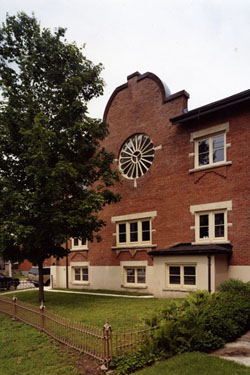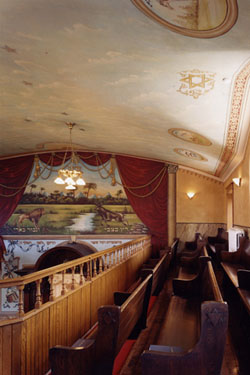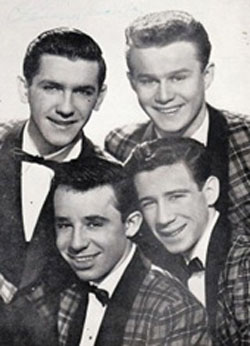This article is from our Toronto Feature series. Features from past programs are not updated.
This content is from a series created in partnership with Museum Services of the City of Toronto and Heritage Toronto. We gratefully acknowledge funding from the Ontario Ministry of Tourism, Culture and Sport, and the Department of Canadian Heritage.
"The Junction Shul: A Heritage Place of Worship"
Although the Junction was some distance from Kensington and the Ward, where the most established Jewish neighbourhoods were, the intersecting railway lines in the neighbourhood afforded many business opportunities in the late 19th and early 20th centuries. By 1900, a small Jewish community had formed in the area, centred on Maria Street. By the 1920s, Maria Street was the Junction's most densely populated Jewish street.
Some of the Junction's Jewish families ran businesses on Dundas Street, while others found work as peddlers or scrap metal dealers. You might not think it to see it today, but there were also many businesses on Maria Street, including grocers, dairies, and kosher butchers. Still other residents worked for local factories.
The Congregation Knesseth Israel was established in 1909 and religious services for the community were held first in a home at the corner of Maria and Runnymede. In 1911, a tract of land was purchased at 56 Maria Street and soon construction began on the synagogue that stands there still. Junction Shul, as it is known, was designed by James A. Ellis and built with its members' labour and donations. The Congregation Knesseth Israel was dedicated the following year. The Shul remained the centre of Jewish life in the Junction throughout the next century.
The Junction's Jewish population has declined in recent decades as people have moved to the suburbs and other parts of Toronto. Nevertheless, the Junction Shul remains an important part of the city's Jewish community, and is believed to be one of the oldest synagogues in Ontario. It was recognized as a heritage place of worship by the unveiling of a plaque in 2001.

 Share on Facebook
Share on Facebook Share on X
Share on X Share by Email
Share by Email Share on Google Classroom
Share on Google Classroom





